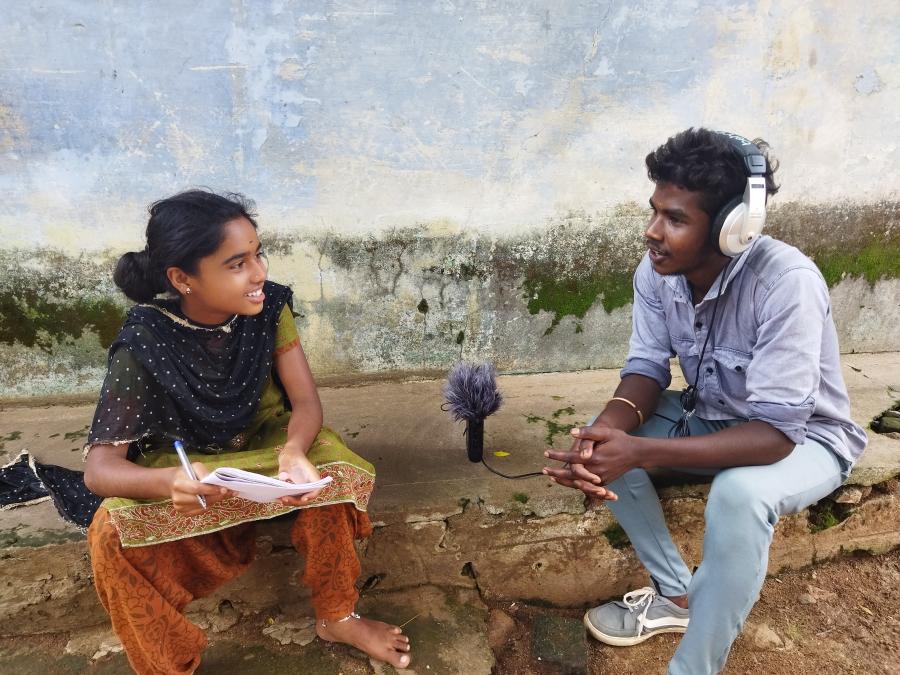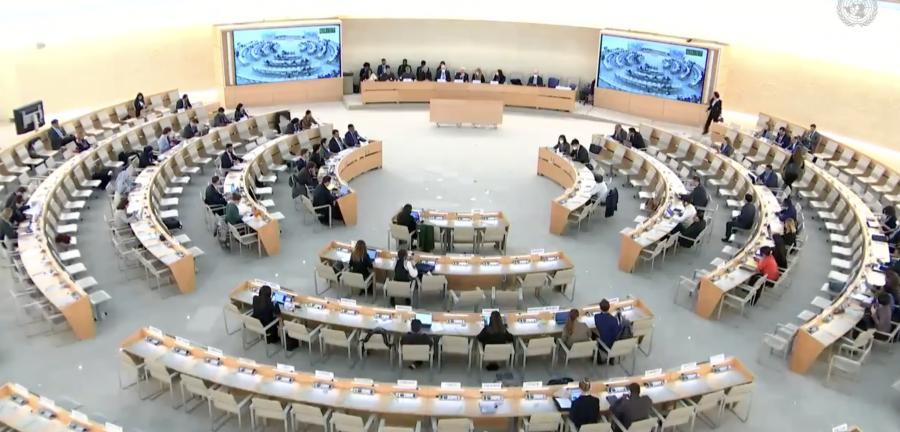The gentle Narmada River, flowing across the central plateau of India to the Arabian Sea, is one of India's few remaining unspoiled rivers. At 1,300 km, she is India's longest western-flowing river and one of her most beautiful. No large cities or industries mar her entire course. She sweeps along unimpeded from her source high in the holy hills of Amarkantak to her mouth north of the city of Surat in the rich agricultural state of Gujarat.
The Narmada is sacred. She is the Mother to the approximately three million people that inhabit her basin and is revered as a goddess. Those who live along her banks believe she is holier than even the Ganga (Ganges), which alone is considered the holiest of all India's rivers. A bath in that blessed water is enough to release one from the endless stream of birth and death, sufficient to untangle one from the sticky web of life.
However, to the those enchanted by the Nimrod's soothing waters, she is the one responsible for freeing her believers from the wheel of life and death. In the mythology and folklore of those living in her valley, it is believed that the goddess Ganga comes yearly in the form of a black cow to wash off her sins in the Narmada. And she returns home purified, journeying as a white cow.
Every persons touched by the Narmada hopes to perform a circumnambulation known as the parikrama at least once before death. This ritual peregrination may begin at any point along the course of the river, but one must traverse the entire length, on both sides, before returning to the starting point. This journey typically takes three to three and a half years and is prescribed by a set of ancient rules and rituals as old as the Mother herself.
The inhabitants of the valley known little of the outside world. They have lived under the protection of the Narmada, caring and making offerings to her since time immemorial. All this is now rapidly changing. The government of India has proposed to construct a series of dams along the course of the Narmada, a project involving some 3,200 dams of various sizes. This would be the largest river valley development project in the world and would leave the Narmada as a series of stagnant lakes and pools. The parikrama would cease to be a force governing the lives of the region's many inhabitants, and the bond joining the people with their Mother would be broken forever.
To the people in the district of Harsud in the state of Madhya Pradesh, India, the construction of the Indira Sarovar Dam would be a fait accompli divorcing them from their homeland. The Indira Sarovar (formerly known as the Narmada Sagar) Dam is one of the two larger dams planned by the Narmada Valley Development Authority (NVDA). While the dam authorities and the World Bank are currently building the other large dam, the Sardar Sarovar, the way is being cleared for the construction of the Indira Sarovar.
Harsud is a district doomed to die. It suffers from the twin effects of being neglected for the last 30 years by the state's development board and by the knowledge that the dam will send the town to its watery grave, or jal samadhi, as it is commonly referred to in Harsud. And the district's residents not much that they can do except keep the status quo bubbling along in its rocky bed.
In late January of 1988, I visited a number of villages in the district of Harsud to talk with the small farmers about their perceptions of the dam. A bumpy, narrow dirt road took me to the gentle small wooden ferry, I was struck by the people's bond with their Mother. Many in the small boat leaned over the side to scoop up handsful of the precious water and bring it to their lips-a gift from the goddess-or bent in prostration to offer her flowers.
It was market day on the opposite bank in the village of Barkeshwar, an excellent opportunity to talk with people from the surrounding villages. I sat down and started asking some questions, soon attracting an interested crowd for the lively, emotional debate. All they know of the Indira Sarovar project was that a dam was to be built "soon" and that they would be forced to leave their lands. These farmers do not want a dam. They want to improve their plots or dig another well, but they cannot. The specter of the dam looms over them all.
The villagers had seen many people come and go over the years. First it was the "brown sahabs" in their suits and ties, but they had never stopped to talk with the local people. They would come in their jeeps, take their measurements and leave. Occasionally, when a villager would approach one of these men with a question, the response would invariably be something like this: "This doesn't concern you" or "Not to worry, we will take care of you." And now the "white sahabs" from the World Bank are appearing and they are asking some questions. The villagers have been happy to respond, but since their words get filtered through a translator, they are never sure that what they say gets through to the World Bank representatives. I learned on one occasion that a villager present at one of these exchanges who could understand a little English became aware that what the translator had told the official from the World Bank was not what the villager had actually said. At that point, the Indian officials accompanying the representatives had whisked them away in their jeeps and off to the next site.
The officials had given very little information on the development project to the villagers. They knew absolutely nothing about what was going to happen to them. No one from the NVDA had come to speak with the villagers about their concerns-when the dam would be built, when they would be forced to leave and exactly where they would be resettled.
Most of these villagers asked me those very same questions. And what could I say other than "Soon Very soon"?
A large gathering took place in the village of Purni in the Harsud district to discuss the recent events surrounding the Indira Sarovar project. About 400 people from the local villages gathered to hear their local leaders speak out against the dam. When the antidam speeches had been made, those assembled were asked to come up and voice their own opinions concerning the dam. But nobody stood up to speak. Obviously the people had some very strong opinions, but why weren't they airing their concerns?
Only after the actual meeting was over and the organizers gathered did I begin to understand. In the small meeting with the organizers I had been openly critical of the dam, an opinion I was reluctant to express at the larger gathering. There I had just been an outside observer; in the smaller gathering I had been drawn into their discussions.
Someone in the group had asked to see my passport. Before I understood what was happening I was being taken away to the local police station for questioning. What followed was an unending nightmare. By midnight I had been questioned repeatedly on eight different occasions by eight different police officers for the same information. I was finally released in the custody of a rather large, burly policeman who escorted me out of the district, assuring me that this was for my protection only. Later, in another district and safely locked inside a hotel room, I realized why no one that morning had spoken out against the dam in front of crowd: they were scared.
All those who had expressed resistance to the dam earlier in the day were either village headmen, large farmers or wealthy businessmen-those with the power and the political clout to speak out. Those who remained silent were the small farmers-those frightened that their remarks would lead them to jail or who could lose a chance of getting any land when resettled. If a white person who had come from so far away to speak out against the dam had been taken away by the police, what would happen to them? Indeed, what could happen to them? The small farmers and wage laborers live in constant fear of police harassment and oppression.
The police, by intimidating the local population, are protecting the interests of the wealthy landlords. The large landowners and village headmen who publicly speak out against the dam are strongly(and secretly)pushing for relocation and resettlement. They stand to profit from being ousted. Most of them own quite a lot of land, much of which lies uncultivated due to the small wage-labor force in the villages. These wealthy landlords are the ones who will receive adequate compensation. The small farmers will get nothing; they will lose their lands and be forced into submission.
Many well-intentioned activists in India are fighting for better compensation for the oustees of the Narmada Valley Development Project, but in many cases their efforts seem misguided and potentially harmful to the very people whom they want to help. By fighting for better compensation, one assumes that the inhabitants will be relocated and that something is causing the relocation. The small farmers do not want a dam, nor do they want to be relocated and resettled. In this particular case, it seems that those fighting for resettlement and relocation only uphold the rights of the wealthier and larger farmers at the expense of the poor. Those working for better compensation should instead help to organize the small farmers for the total cessation to the construction of the dams. If resettlement and relocation succeeds, one million people in the Narmada Valley will lose their ancestral lands, their source of livelihood and their cultural heritage-forever.
Update: Todd Nochowitz recently received a letter from a grassroots activist, currently living in Harsud District of Madhya Pradesh, who is part of a small group of social workers protesting the resettlement and relocation of villagers in this district. The group has been trying to inform villagers about the government's resettlement plans and to raise opposition to the construction of the dam. According to the letter, the group has been the target of a campaign by local officials to "defame and alienate us by spreading stories about us being foreign agents, anti-national people bent upon seeing that the country does not develop. We have had some minor scuffles, but no major hassles so far." The villagers have yet to receive any concrete information from the government.
Article copyright Cultural Survival, Inc.



